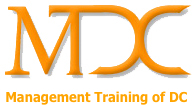What’s The Best Way To Find A Job?; What’s Best To Do While Looking For A Job?
 The best time to look for a job is when you have a job.
The best time to look for a job is when you have a job.
Question: But what if you don’t have a job?
How to look?
And what to do meanwhile?
Answer: Go back to school.
Continuous learning is, well, continuous.
And it doesn’t have to be expensive.
Here are three FAB’s, the Features, Advantages and Benefits of going back to class.
If you have a job or not.
First Feature
Meet a professor
Advantage
Learn subject matter.
Learn presentation — interview — life skills.
Get referrals.
Benefit
Cheaper than a personal coach.
Get a character reference letter.
Get employed faster
Second Feature
Meet other inquisitive minds
Advantage
Expand your Friend contact database.
Challenge assumptions.
Increased network of contacts for job referrals.
Benefit
Faster learning.
Cheaper than a job placement agency.
Get employed faster
Third Feature
Regularly scheduled class times.
Advantage
Encourages the student to get out of bed, out of the house.
Provides structure to the job seekers’ week.
Forces the student to walk past career counselors’ office.
Benefit
Get more done in less time.
Spend less time in Starbucks.
Get employed faster.
The purpose of continuing education is the gaining of new knowledge, skills and abilities. But this is even more important when one is out of work. A perspective employer is going to ask you a number of questions.
The first question will be, “What are you doing now?”
The perfect answer is, “As I look for my next position, I am taking a business refresher course at my local community college.”
Remember: the best time to find a job is when you are working — going to class is your job.
You may be unemployed, but you are busy: You are using your time wisely while you look for work.
As it happens, the Northern Virginia Community College has the perfect solution to help you find your next job.
Sit in my class.
NOVA has openings in one of my Business 100 classes. We will meet once each Friday from 3:10 to 6:00 at the Alexandria Campus. Starts January 16th. Call now to register. Operators are standing by.
Or apply on-line.
This Friday afternoon class is the perfect capstone to the week and allows the student to job hunt early in the week, early in the day.
Come join my class. And get employed faster.
Thank you (foot)notes:
For more on your job search: tattoos, lying, resume enhancement and trick questions follow links below.
Read Job Search? PASS This Test
See how “Sarah” is getting it right. To get your next job, assignment or project PASS this test! See how the mythical composite Sarah learned new behaviors to find new opportunities.
As first appeared in The Daily Progress, Charlottesville, Virginia, January 20, 2002
To get a job, first get a plan and then get busy…
Your Business Blogger(R) is of a certain age from a certain generation with teenage children and is confused by various body art. I do not understand tattoos. (Except on my dad, who was in the Navy…) A future employer also may not understand body art. Not even Starbucks.
What is the first question hiring managers ask themselves? Get a Blog; Get Hired — And the First Question
The Lie: A Guide to Fibbing in the Job Interview, it’s not what you think.
Here’s what your interviewer is really looking for, Job Interview: How To Tell If the Candidate Will Lie, Cheat, Steal?
There is actually controversy on hiring competence, Hiring Super Stars vs Tolerating Turkeys
Be sure to ask some questions in your job interview, Job Interview: 3 Questions for Your Prospective Boss.
Yes, High School still counts. Forever. What’s the One Best Question to Ask a Job Candidate?
Why Were You Really Hired? The Two Qualities That Count.
Here’s the Business 100 course outline:
Ch. 1 Exploring the World of Business and Economics
Ch. 2 Being Ethical & Socially Responsible
Ch. 3 Exploring Global Business
Ch. 4 Navigating the World of e-Business
Ch. 5 Choosing a Form of Business Ownership
Ch. 6 Small Business, Entrepreneurship, and Franchises
Ch. 7 Understanding the Management Process
Ch. 8 Creating a Flexible Organization
Ch. 10 Attracting and Retaining the Best Employees
Ch. 11 Motivating and Satisfying Employees and Teams
Ch. 13 Building Customer Relationships Through Effective Marketing
Ch. 14 Creating and Pricing Products that Satisfy Customers
Ch. 15 Wholesaling, Retailing, and Physical Distribution
Ch. 16 Developing Integrated Marketing Communications
Ch. 18 Using Accounting Information
Ch. 19 Understanding Money, Banking, and Credit
App. C Business Law

Recent Comments